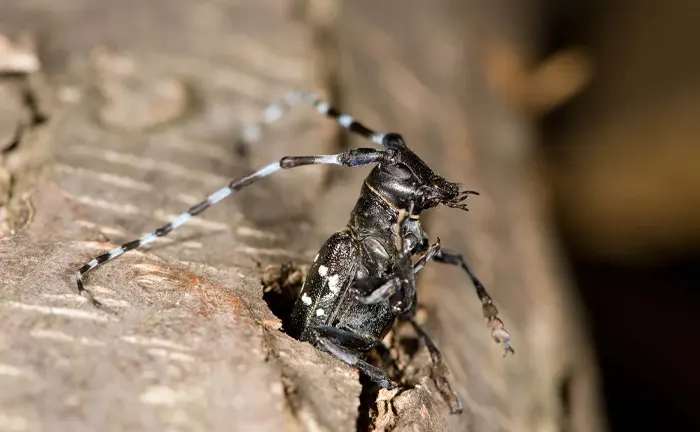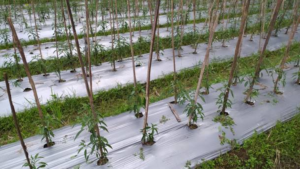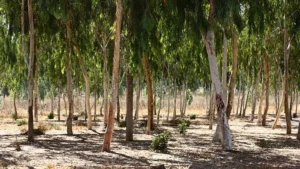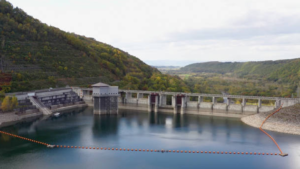Top 4 Strategies for Forest Pest Management and Prevention
- August 13, 2024
- 0 comment
Forest ecosystems play a crucial role in maintaining biodiversity, regulating climate, and providing resources for wildlife and human communities. However, pests pose a constant threat to these ecosystems, potentially leading to significant ecological and economic consequences.

Implementing effective pest management and prevention strategies is essential to preserve forest health and productivity. The following discussion delves into the top strategies for managing and preventing pests in forests, with a focus on integrated pest management (IPM), biological control, cultural practices, and policy frameworks.
List of Forest Pest Management:
- Integrated Pest Management (IPM)
- Biological Control
- Cultural Practices
- Policy and Regulatory Frameworks
Understanding Forest Pests
Forest pests include insects, pathogens, and other organisms that can cause damage to trees and forest ecosystems. Some common forest pests are:
- Insect Pests: These include bark beetles, gypsy moths, and emerald ash borers. They bore into trees, feed on foliage, and weaken tree structures, leading to dieback and increased vulnerability to other stressors.
- Pathogens: Fungi, bacteria, and viruses can infect trees, causing diseases such as Dutch elm disease and chestnut blight, which have historically devastated certain tree species.
- Invasive Species: Non-native pests can spread rapidly in forests without natural predators, causing significant harm to native species and ecosystem balance.
Effective pest management requires a comprehensive understanding of these pests’ biology, behavior, and ecological impacts.
1. Integrated Pest Management (IPM)
Integrated Pest Management (IPM) is a holistic approach that combines multiple strategies to manage pest populations sustainably. IPM emphasizes monitoring, prevention, and control measures that are economically viable and environmentally friendly.

Components of IPM
- Monitoring and Identification: Regular monitoring of pest populations and accurate identification are crucial for early detection and targeted interventions. This involves using traps, visual inspections, and remote sensing technologies.
- Threshold Levels: Establishing threshold levels helps determine when pest populations are likely to cause significant damage and require intervention. This prevents unnecessary treatments and promotes sustainable management.
- Cultural Controls: These practices involve modifying the environment to reduce pest incidence. For example, maintaining tree diversity, proper pruning, and sanitation can minimize pest habitats and reduce outbreaks.
- Biological Controls: Utilizing natural predators, parasites, and pathogens to control pest populations is an effective and environmentally friendly strategy. For instance, releasing parasitoid wasps to control gypsy moth populations can help maintain ecological balance.
- Chemical Controls: Pesticides are used judiciously as a last resort when other methods fail. Selecting targeted, low-toxicity chemicals and following proper application techniques minimize environmental impacts.
- Education and Training: Providing training to forest managers, landowners, and stakeholders ensures proper implementation of IPM practices and encourages community involvement in pest management efforts.
2. Biological Control
Biological control involves using natural enemies to suppress pest populations. This strategy leverages ecological interactions and offers long-term pest management solutions.

Types of Biological Control
- Predators: These are animals that consume pests. For instance, birds, bats, and beetles prey on insect pests, reducing their numbers.
- Parasitoids: Parasitoid insects lay their eggs on or inside pests, eventually killing them. Trichogramma wasps are commonly used to control caterpillar pests.
- Pathogens: Pathogenic microorganisms, such as bacteria, fungi, and viruses, can infect and kill pests. The bacterium Bacillus thuringiensis (Bt) is widely used to control caterpillar pests.
- Herbivores: In some cases, introducing herbivores that feed on invasive plant species can help control their spread.
Advantages of Biological Control
- Sustainability: Biological control provides long-term pest management without relying on chemical inputs.
- Safety: Natural enemies target specific pests, reducing non-target effects on beneficial organisms.
- Cost-effectiveness: Once established, biological control agents can maintain pest populations at low levels with minimal additional inputs.
3. Cultural Practices
Cultural practices involve manipulating forest management techniques to create unfavorable conditions for pests. These practices are preventive and can significantly reduce the risk of pest outbreaks.

Key Cultural Practices
- Silvicultural Techniques: Implementing practices such as thinning, pruning, and selective harvesting can enhance tree vigor and resilience, making them less susceptible to pests.
- Tree Species Diversity: Planting a mix of tree species increases ecosystem resilience and reduces the risk of widespread pest outbreaks. Diverse forests provide habitats for natural enemies and disrupt pest life cycles.
- Sanitation Practices: Removing diseased or infested trees and debris minimizes pest habitats and reduces the potential for outbreaks.
- Proper Irrigation and Nutrition: Ensuring trees receive adequate water and nutrients enhances their health and ability to withstand pest attacks.
- Seasonal Timing: Adjusting planting and harvesting times can disrupt pest life cycles and reduce their impact.
4. Policy and Regulatory Frameworks
Effective pest management requires supportive policy and regulatory frameworks that promote sustainable practices and facilitate collaboration among stakeholders.

Key Policy Approaches
- Quarantine Measures: Implementing quarantine measures and monitoring trade routes can prevent the introduction and spread of invasive pests.
- Research and Development: Supporting research on pest biology, management techniques, and innovative technologies is crucial for developing effective strategies.
- Collaboration and Coordination: Encouraging collaboration among government agencies, non-governmental organizations, and local communities enhances pest management efforts.
- Public Awareness Campaigns: Raising awareness about pest threats and management practices encourages public involvement and fosters a sense of responsibility for forest health.
Challenges and Future Directions
While effective pest management strategies exist, several challenges must be addressed to ensure their success:
- Climate Change: Changing climate conditions can alter pest distribution and behavior, necessitating adaptive management approaches.
- Invasive Species: The global movement of goods and people increases the risk of introducing invasive pests, requiring vigilant monitoring and rapid response measures.
- Funding and Resources: Adequate funding and resources are essential for research, monitoring, and implementation of pest management strategies.
- Education and Training: Continuous education and training of forest managers and stakeholders are vital to keep pace with evolving pest threats and management techniques.
Final Conclusion
Effective forest pest management and prevention strategies are crucial for maintaining healthy and resilient forest ecosystems. Integrated Pest Management (IPM), biological control, cultural practices, and supportive policy frameworks are key components of a comprehensive approach. By combining these strategies, forest managers can mitigate pest impacts, preserve biodiversity, and ensure the long-term sustainability of forest resources. As the challenges of climate change and invasive species continue to evolve, ongoing research, collaboration, and adaptation will be essential to safeguard our forests for future generations.
Frequently Asked Questions (FAQs)
- What are the main types of pests that affect forest ecosystems?
The main types of pests that affect forest ecosystems include insect pests (such as bark beetles and gypsy moths), pathogens (including fungi, bacteria, and viruses), and invasive species that can disrupt native ecosystems. - What is Integrated Pest Management (IPM) and how does it work?
Integrated Pest Management (IPM) is a comprehensive approach that combines multiple strategies to manage pest populations sustainably. It involves monitoring pest populations, setting threshold levels for interventions, using cultural and biological controls, and applying chemical controls as a last resort. - How does biological control help manage forest pests?
Biological control involves using natural enemies, such as predators, parasitoids, and pathogens, to suppress pest populations. This method is environmentally friendly and offers long-term pest management by leveraging ecological interactions. - What are some cultural practices used in forest pest management?
Cultural practices involve modifying forest management techniques to create unfavorable conditions for pests. These include maintaining tree species diversity, implementing proper sanitation practices, adjusting seasonal timing of planting and harvesting, and ensuring adequate irrigation and nutrition for trees. - Why is tree species diversity important in preventing pest outbreaks?
Tree species diversity enhances ecosystem resilience by providing habitats for natural pest enemies and disrupting pest life cycles. Diverse forests are less susceptible to widespread pest outbreaks compared to monocultures. - What role do policy and regulatory frameworks play in forest pest management?
Policy and regulatory frameworks support pest management efforts by implementing quarantine measures, promoting research and development, encouraging collaboration among stakeholders, and raising public awareness about pest threats and management practices. - How can climate change impact forest pest management strategies?
Climate change can alter pest distribution, behavior, and life cycles, potentially increasing pest outbreaks. Adaptive management strategies are needed to address these changing conditions and protect forest ecosystems. - What challenges do forest managers face in implementing effective pest management strategies?
Challenges include the introduction of invasive species, funding and resource limitations, the need for continuous education and training, and adapting to the impacts of climate change on pest dynamics. - How can public awareness campaigns contribute to pest management efforts?
Public awareness campaigns educate communities about the importance of pest management, encourage responsible practices, and foster community involvement in preserving forest health. - What are the benefits of using chemical controls in forest pest management?
Chemical controls can be effective for managing pest populations when other methods are insufficient. However, they should be used judiciously, targeting specific pests with low-toxicity chemicals to minimize environmental impacts.
We hope this guide provides you with valuable insights into effective strategies for forest pest management and prevention. Whether you are a forest manager, a landowner, or simply passionate about maintaining healthy forest ecosystems, understanding and implementing these strategies can make a significant difference. Have you tried any of the pest management strategies discussed here, or do you have additional tips to share? Join the conversation and share your experiences below. Your contributions can help others make informed decisions and inspire future discussions. Don’t forget to share this article with fellow forestry professionals and enthusiasts to spread awareness and knowledge!

Gilbert Griffin
Forestry AuthorGilbert Griffin is a forest management expert specializing in sustainable practices, forest health, conservation, and land management. With extensive knowledge in pest control, disease management, and habitat restoration, Gilbert develops strategies to preserve forest ecosystems and biodiversity. Passionate about the natural world, Gilbert adapts to changes in forest management and stays updated through continuous learning. Gilbert also provides seasonal advice to optimize forest care throughout the year.













Leave your comment